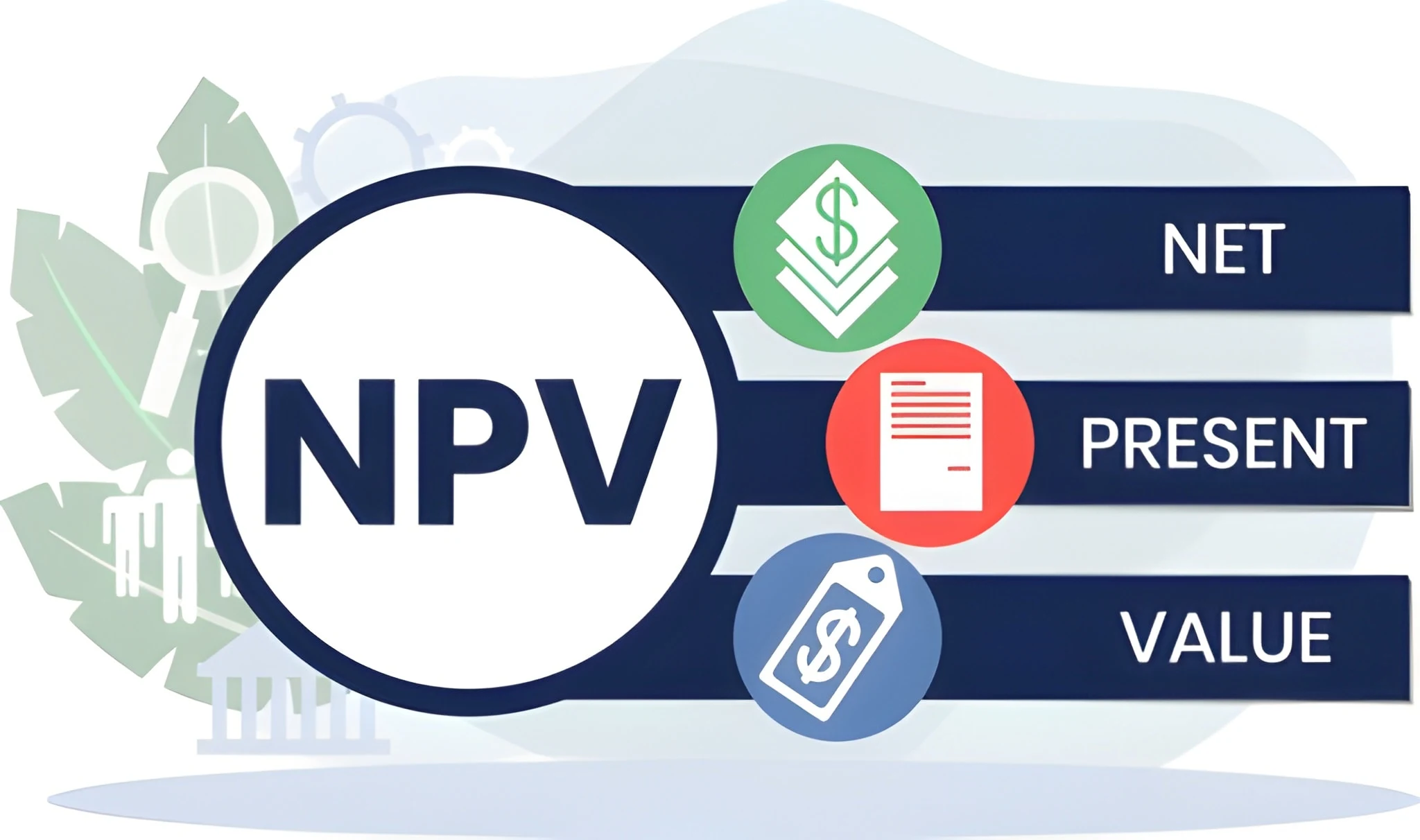NPV Calculator
Calculate the Net Present Value (NPV) of your investment to determine its profitability.
Investment Parameters
Annual Cash Flows
NPV Results
NPV Insights
- N
Net Present Value: $0 - This represents the value of your investment in today's dollars after accounting for the time value of money.
- ✓
Decision Rule: Reconsider this investment since it has a negative NPV.
- %
Discount Rate Impact: Your NPV of $0 is based on a 10% discount rate. Higher rates reduce NPV, while lower rates increase it.
Related & Other Popular Calculators
The NPV Calculator is a valuable resource that allows investors, business owners, and financial analysts to identify whether or not an investment will actually make money, or lose money. It calculates the present value of anticipated future cash inflows, allowing the user to use with confidence, and compare more than project, and project profitability overall.

What Is Net Present Value (NPV)?
Net Present Value (NPV) is a financial measure that helps assess the value of an investment and/or project in terms of its present cash inflows compared to the investment cost. If NPV is positive, the investment is said to create profit, if NPV is negative, it may lose. The NPV Calculator provides those calculations for you immediately with detailed charts and analysis.
Why Use an NPV Calculator?
Calculating NPV values manually takes time, and can easily lead to user error, especially if you are calculating NPV across more than one year, or a variety of discount rates! The NPV Calculator helps you avoid mistakes, and verify important values by:
With this tool, you can confidently compare investment opportunities and optimize your financial decisions.
How to Use the NPV Calculator
Using our NPV Calculator is simple:
The results include:
Benefits of Using Our NPV Calculator
Whether you are analyzing a business expansion, looking for startup funding, or investing in stocks, our NPV Calculator will help you determine the best decision.
Our NPV Calculator is designed for professionals and beginners alike. Whether you are a financial analyst, business owner, or investor, you will find this tool easy to understand, and it is a great way to obtain data-driven help in your decision-making. Start today to maximize your return on countless endeavors and minimize exposure to risks.
FAQs
An NPV Calculator is an online tool that calculates the profitability of an investment by estimating the present value of future cash flows, then evaluating that amount against the required investment costs.
NPV is important because it helps investors determine if an investment will create value. A positive NPV means profitability, while negative NPV indicates losses may occur.
NPV Calculator uses precise formulas to estimate/discount cash flows, providing for accurate results when analyzing investments.
NPV Calculator can be used for both business projects or for personal investments (real estate, bonds, or other retirement plans).
The discount rate is often the cost of capital, many investors use expected return, or required rate of return. A varying of rates can be applied based on risk and investment type.
In general, yes. A higher NPV suggests much greater profitability. The investor should consider risks, cash flow timing, and other alternative opportunities in consideration for investing.